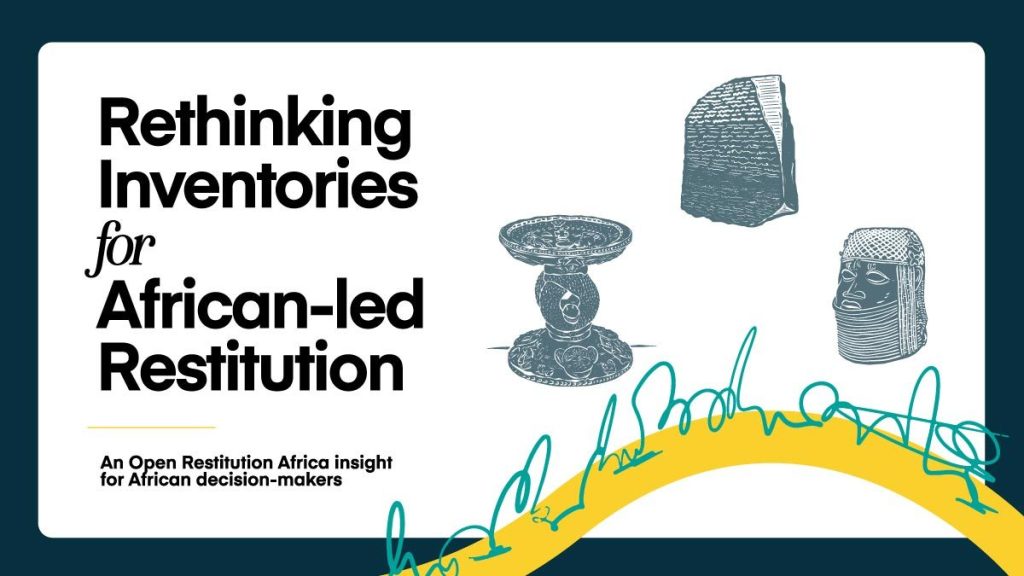This policy brief responds to an emerging challenge in the restitution landscape: African governments and decision-makers are increasingly considering comprehensive national inventory programs that attempt to catalog all cultural objects originating from their countries and their current locations worldwide.
While inventory work serves important purposes, we argue that these large-scale cataloging initiatives are resource-intensive and often unviable given the constraints African governments face. Instead, we advocate for a strategic reallocation of limited government resources toward supporting community-led restitution projects that are already active or seeking to begin—efforts that require immediate attention and are already achieving results despite operating in challenging circumstances.
Our recommendations target African decision-makers weighing resource allocation decisions, offering an alternative approach that prioritizes urgent, grassroots restitution work over exhaustive national cataloging projects.
Key Findings
Inventories don’t guarantee returns. Our research found no direct link between publishing inventories and the actual return of heritage items. Instead, most successful restitution efforts are driven by communities who discover their belongings through chance encounters or grassroots mobilisation.
The costs are enormous. One project cost €3.9 million to document, build knowledge and make accessible around 5246 items from a single kingdom while another identified over 40,000 Cameroonian items in German museums alone—a scale that makes comprehensive inventories financially unrealistic for most African countries.
Colonial distortions persist. Museum records created during colonial rule use labels like “fetish” or “amulet” that obscure true meaning, while most Western institutions still tightly control access to their collections.
A Different Approach

The evidence points towards community-driven, demands-based inventories that start with what communities have lost, rather than what museums hold. This approach:
- Supports existing community mobilisations rather than creating comprehensive catalogues
- Respects cultural protocols around sacred knowledge
- Works within varying levels of digital access across Africa
- Prioritises sustainability and local ownership
Why This Research Matters
When pursued, inventories are most effective when anchored in national institutions, tied to public programming, and used to reconnect communities with the histories—and futures—of their stolen heritage.
But visibility alone is not justice.
Restitution is not only about return—it’s about repair. African governments must choose where to invest for long-term cultural renewal and social cohesion. Download the policy brief (available in French and English) to access detailed case studies, strategic recommendations and practical frameworks for community-centred restitution efforts.


